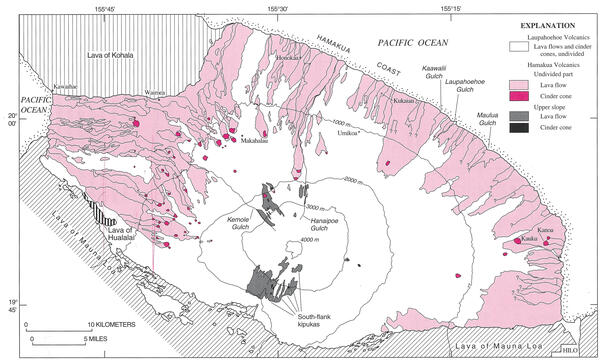Interferogram image made from InSAR monitoring, showing 1995-2001 ground uplift in the Three Sisters.
linkAbout 130 mm (5 inches) of peak uplift from 1995 to 2001 is shown in this interferogram in the Three Sisters Wilderness. Magma accumulating at about 7 km (about 4.5 mi) depth is the likely cause of uplift. The area of uplift, about 20 km (12 miles) in diameter, is almost entirely within the wilderness area.






















